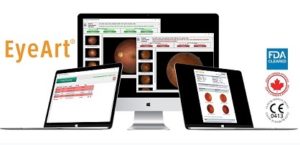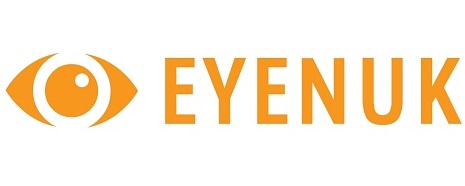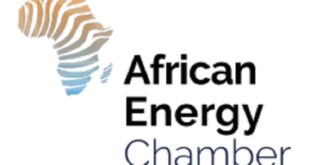Eyenuk Announces FDA Clearance for EyeArt Autonomous AI System for Diabetic Retinopathy Screening
EyeArt is the First FDA Cleared AI Technology for
Autonomous Detection of Both More than mild and Vision-
Threatening Diabetic
Retinopathy
Eyenuk, Inc a global artificial intelligence (AI) medical technology an .,
,services company and the leader in real-world applications
for AI Eye Screening, announced today that it has received
510(k) clearance (K200667) by the U.S. Food & Drug
Administration (FDA) to market its EyeArt® autonomous AI
System for diabetic retinopathy, a leading cause of
blindness among American adults.
EyeArt is indicated for use by healthcare providers to
automatically detect more than mild diabetic retinopathy
(mtmDR) and vision-threatening diabetic retinopathy
(vtDR) in eyes of adults diagnosed with diabetes who have
not been previously diagnosed with more than mild diabetic
retinopathy. EyeArt is the first FDA cleared autonomous AI
technology that can detect both mtmDR and vtDR in one
test, in primary care and eye care settings. In addition,
EyeArt is also the first FDA cleared autonomous AI
technology that has diagnostic outputs for each eye of a
patient.
Diabetic retinopathy (DR) is a common complication of
diabetes. It is characterized by progressive damage to the
blood vessels of the retina, the light-sensitive tissue at the
back of the eye that is necessary for good vision. According
to CDC, an estimated 4.1 million and 899,000 Americans
are affected by retinopathy and vision-threatening
retinopathy, respectively.1 It is estimated that number of
vision-threatening diabetic retinopathy patients around the
world will reach 56.3 million by 2030.2
While DR screening is recommended for all diabetic
patients, less than half get screened annually3, even in the
developed world. Since more than 30 million Americans
have diabetes and diabetic patients outnumber
ophthalmologists by 1,600 to 1 in the U.S.,4 there are just
not enough eye care specialists to meet the DR screening
needs of the growing diabetic population. Even for those
receiving their annual screening, ophthalmology
appointment wait times for DR screening can be weeks or
even months. Since pharmaceutical and surgical
therapeutics can effectively prevent DR related blindness
when patients are identified and treated on a timely basis,
offering convenient and reliable DR screening without over-
burdening eyecare professionals has become a top priority
of governments, health systems and payors around the world.
The EyeArt 510(k) clearance is based on a pre-registered,
prospective, multi-center pivotal clinical trial
(ClinicalTrials.gov ID NCT03112005). A total of 942
participants were consented of which 915 participants met
study eligibility criteria. Of the 655 participants aligned for
analysis to establish substantial equivalence, 380 were
enrolled at 7 primary care sites and 275 were enrolled at 4
ophthalmology sites. Study participants underwent 2-field
retinal photography for analysis by the EyeArt system. They
then underwent dilated four wide field stereo retinal
photography for the reference standard which was
determined by expert graders at the Fundus Photography
Reading Center (FPRC), according to the Early Treatment
for Diabetic Retinopathy Study severity (ETDRS) scale. The
rigorous ETDRS reference standard implemented by a
reading center such as FPRC is typically only used in clinical
trials and not feasible in clinical practice due to its
significant requirements for time and resources.
EyeArt’s FDA clearance was based on analysis of EyeArt
performance in participants enrolled at primary care and
general ophthalmology sites during a period of time where
enrollment was sequential and also during a period where
sites were permitted to enrich the study population. The
sequential enrollment allows for an unbiased
representation of the US diabetic population and provides
the following topline results from this pivotal clinical trial.
- 96% sensitivity and 88% specificity for detecting mtmDR
- 92% sensitivity and 94% specificity for detecting vtDR
- All eyes with ETDRS level 43 or higher were correctly identified as mtmDR positive
The study also showed that novice operators can be trained
to obtain medical grade retinal images. Even at primary
care centers where most operators did not have prior
ophthalmic imaging experience, EyeArt had an imageability
of 97% (i.e., disease detection results were provided for
97% of eyes that received a reading center grading).
Moreover, a vast majority of participant eyes (90%)
received disease detection results without needing dilation.
“This is great news to over 30 million Americans living with
diabetes, especially those who may have vision-threatening
diabetic retinopathy. The EyeArt autonomous AI System
can now enable safe, effective, and equitable diabetic eye
screening at convenient point-of-care locations, with AI
results available in less than 1 minute,” said Kaushal
Solanki, Ph.D., founder and CEO of Eyenuk. “This historical
FDA clearance is our first major milestone enabled by our
prospective, multi-center pivotal clinical trial which took us
years to plan and complete.”
The EyeArt system is indicated for use with two models of
fundus camera in the U.S., Canon CR-2 AF and Canon CR-2
Plus AF. Eyenuk plans to expand the list of EyeArt-
compatible imaging devices, by leveraging Eyenuk’s deep
expertise in device validation, clinical research, and
regulatory process in markets around the world.
Autonomous AI for diabetic retinopathy screening will
likely be covered by payors starting 2021. In May 2019, the
AMA CPT Editorial Panel created new CPT code 9225X
(Imaging of retina for detection or monitoring of disease;
with point-of-care automated analysis with diagnostic
report; unilateral or bilateral) for point-of-care automated
analysis that uses innovative AI technology to perform the
interpretation of the eye exam, without requiring that an
ophthalmologist interpret the results. Medicare is
considering CPT code 9225X to be a diagnostic service
under the Physician Fee Schedule and is creating separate
payment for it.


 التكنولوجيا وأخبارها بوابة الإمارات لتكنولوجيا المعلومات والإتصالات
التكنولوجيا وأخبارها بوابة الإمارات لتكنولوجيا المعلومات والإتصالات





